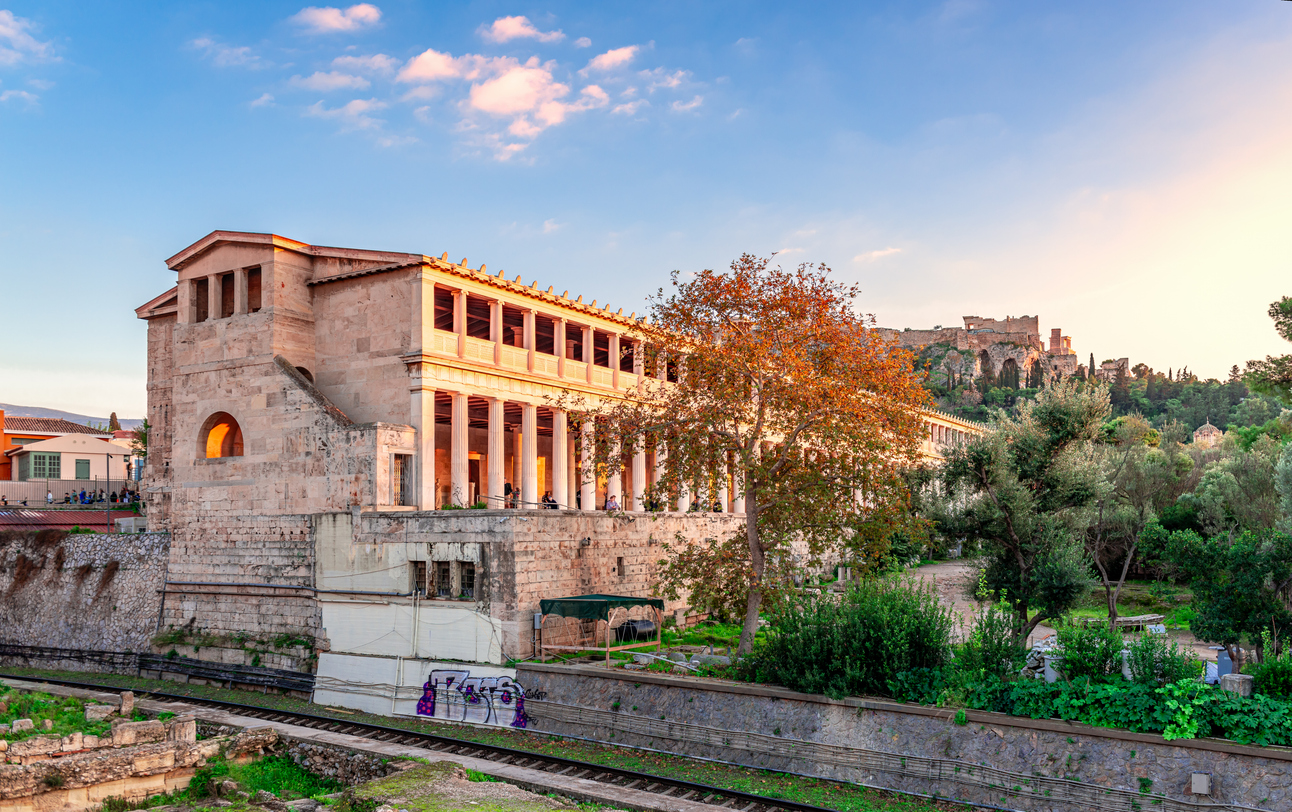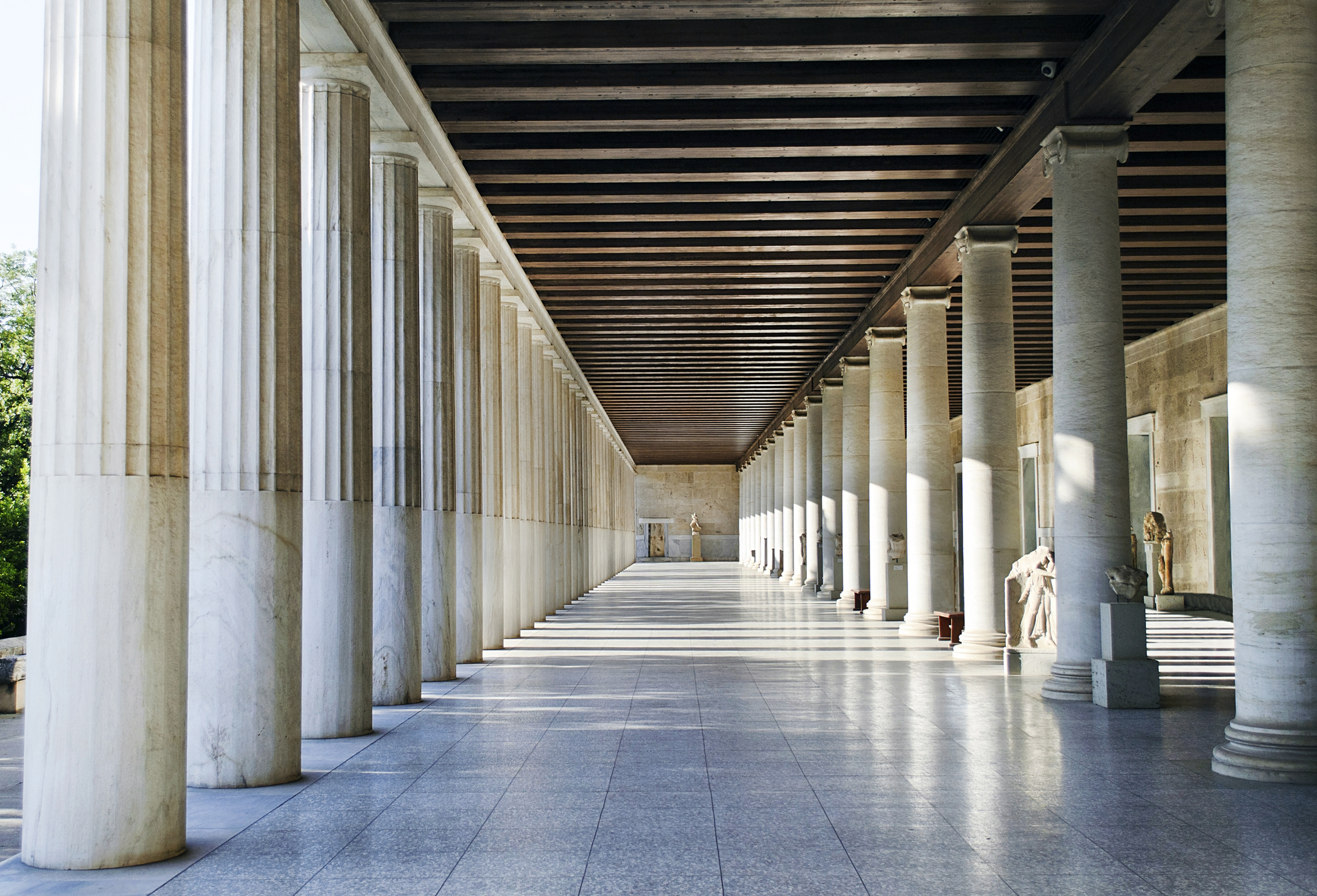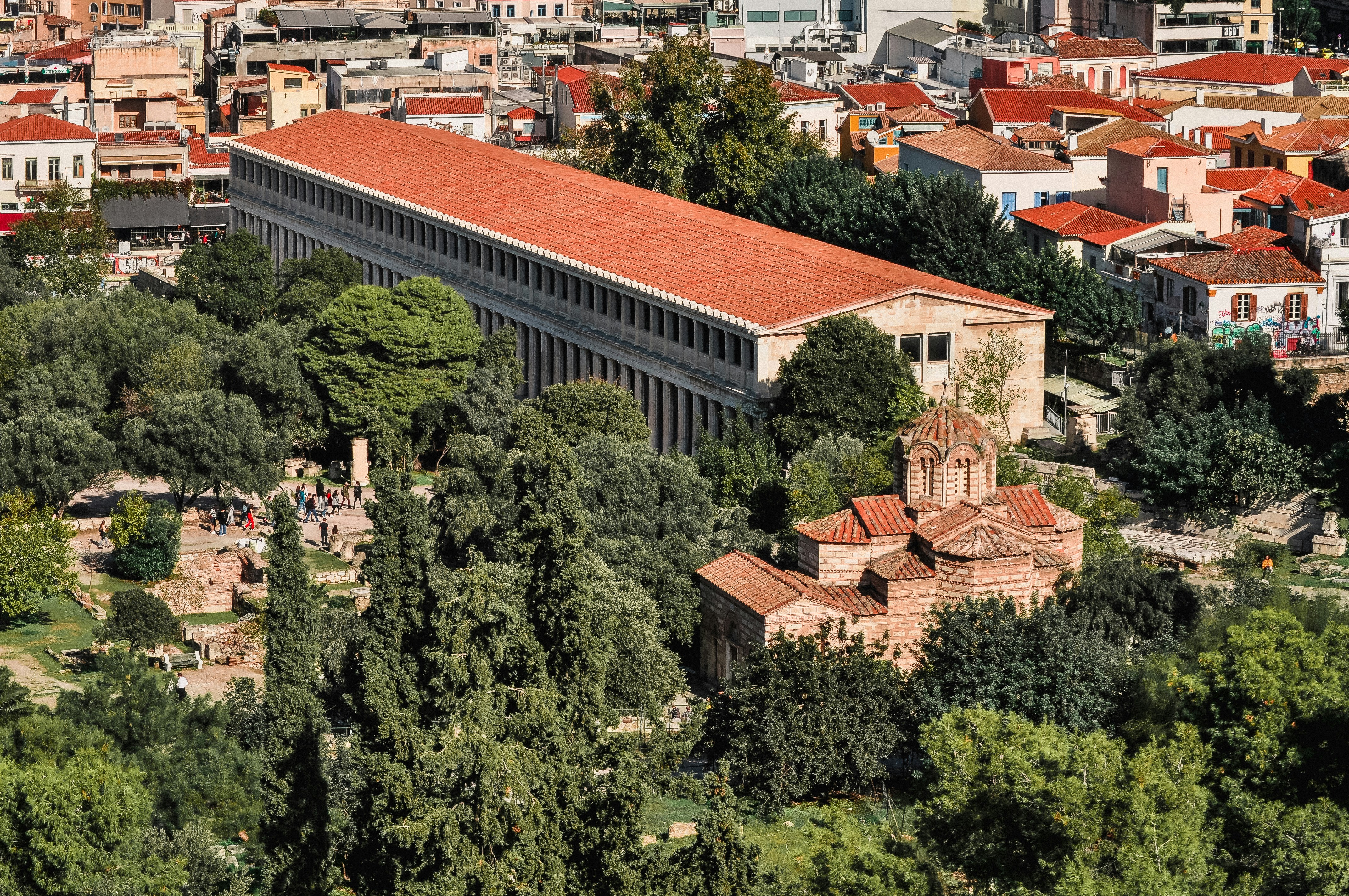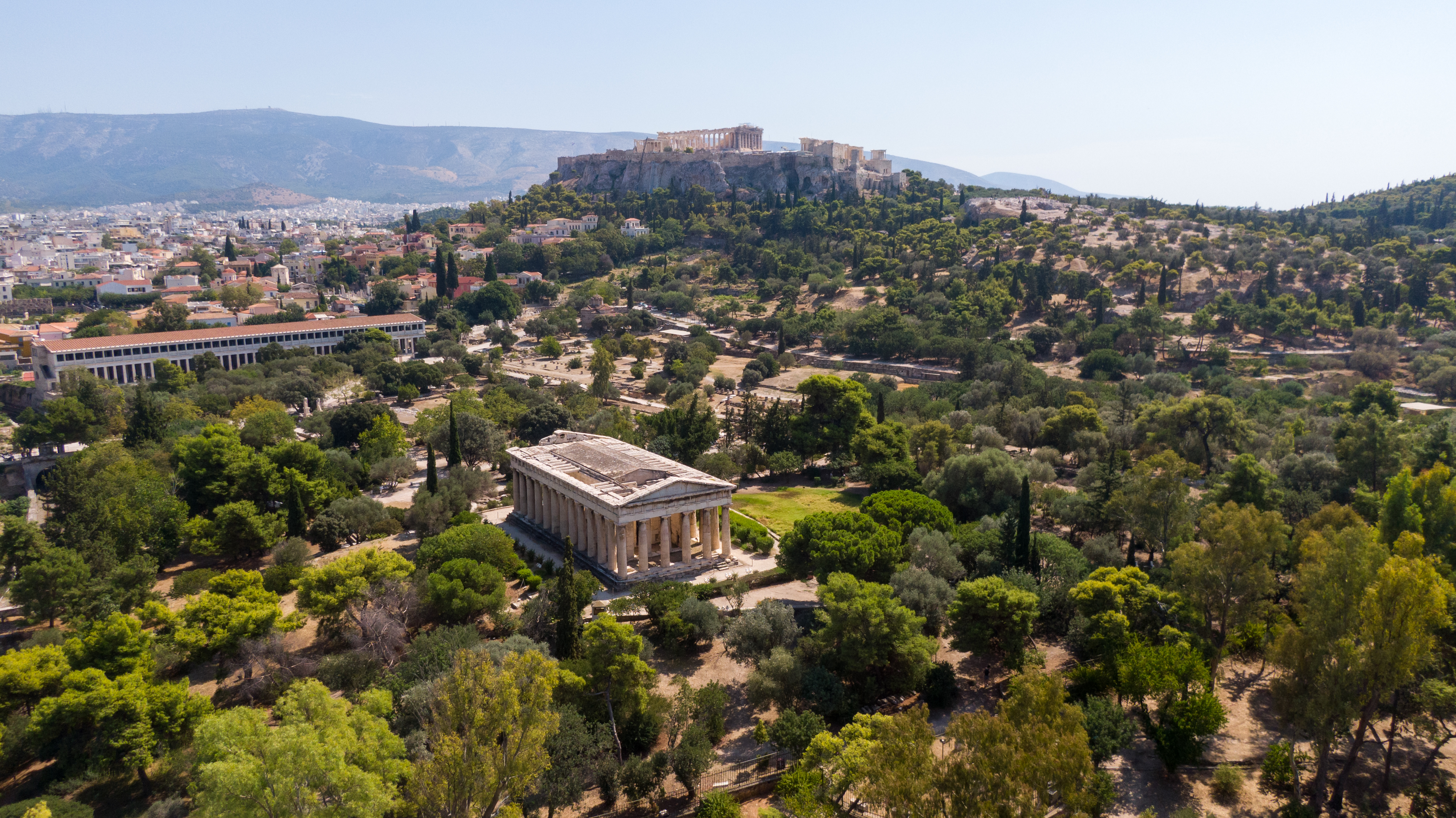Stoa of Attalos: A Testament to Athenian Commerce and Culture


The Stoa of Attalos is more than just a grand structure; it is a symbol of the bustling commercial and social life that once thrived in the heart of ancient Athens. As you walk through the Ancient Agora, the stoa stands tall, offering a glimpse into a world where Athenians would gather to trade, discuss politics, and simply enjoy the vibrancy of their city.
History and Construction
Built between 159 and 138 BC by King Attalos II of Pergamon, the Stoa of Attalos was a generous gift to the city of Athens. This gesture was not merely an act of diplomacy but a testament to the close cultural and intellectual ties between Pergamon and Athens—two cities that were at the forefront of Hellenistic civilization.
The stoa served as a commercial hub, a place where merchants and craftsmen could sell their goods and where Athenians from all walks of life could congregate. Imagine the stoa buzzing with activity, with the voices of traders haggling over prices, the laughter of children, and the serious discussions of philosophers pondering life’s great questions. It was a space where the pulse of Athenian life was felt most vividly.
Sadly, the stoa’s original structure met a tragic fate in 267 AD when it was destroyed by the Heruli, a Germanic tribe that invaded Athens. However, like much of Athens’ history, the story of the Stoa of Attalos did not end with its destruction.
Architecture and Design
The architectural design of the Stoa of Attalos is a fascinating blend of practicality and beauty, reflecting the sophistication of Hellenistic architecture.
- The stoa stretches 115 meters long and 20 meters wide, a substantial size that made it a prominent feature in the Agora.
- Constructed of Pentelic marble and limestone, the stoa’s materials were carefully chosen to reflect the grandeur of the structure.
- Unusually for its time, the stoa was built with two stories. The ground floor featured a Doric exterior colonnade and an Ionic interior colonnade, while the upper floor showcased an Ionic exterior colonnade and a Pergamene interior colonnade. This combination of architectural orders not only provided structural support but also demonstrated the blend of artistic styles that characterized the Hellenistic period.
Inside the stoa, there were 21 rooms on each floor along the western wall. These rooms likely served as shops or offices, making the stoa a vital center of commerce in ancient Athens.
Modern Reconstruction
In the mid-20th century, the Stoa of Attalos was meticulously reconstructed by the American School of Classical Studies at Athens. From 1952 to 1956, archaeologists and architects worked to bring this ancient structure back to life, using original materials found on-site wherever possible.

The reconstruction followed the ancient foundations closely, ensuring that the Stoa of Attalos we see today is as true to its original form as possible. Walking through the reconstructed stoa, you can almost feel the presence of ancient Athenians, as if the walls themselves are whispering stories of the past.
Today, the Stoa of Attalos houses the Museum of the Ancient Agora, a treasure trove of artifacts that offer insights into Athenian democracy, commerce, and daily life.
Museum Exhibits
The museum within the Stoa of Attalos is a must-visit for anyone interested in the history of Athens. The exhibits are carefully curated to provide a deep understanding of the city’s rich history.
- The museum’s collection includes clay, bronze, and glass objects, as well as sculptures, coins, and inscriptions dating from the 7th to the 5th centuries BC. These artifacts offer a glimpse into the daily lives of the ancient Athenians and the vibrant culture that flourished in the Agora.
- Notable exhibits include ancient ballot boxes, which serve as a reminder of Athens’ pioneering role in the development of democracy, and a water clock (klepsydra) that was used to time speeches during public debates. These artifacts not only tell the story of Athenian politics but also highlight the city’s advancements in technology and governance.
The Stoa of Attalos stands today not just as a reconstructed building, but as a living museum—a place where history comes alive and where visitors can connect with the ancient world in a deeply personal way.
Connecting the Dots: The Stoa of Attalos in the Tapestry of Athenian Life
The Stoa of Attalos is more than a stand-alone architectural marvel; it is a vital thread in the intricate tapestry of Athenian life that spans centuries. To truly appreciate the Stoa, one must understand its role within the broader context of Athens’ historical and cultural evolution.
In the heart of the Ancient Agora, the Stoa of Attalos was not merely a commercial space but a social hub where Athenians from all walks of life would converge. This was a place where ideas were exchanged as freely as goods, where philosophy met everyday life, and where the pulse of Athenian democracy could be felt most strongly. The Agora itself was the epicenter of public life in Athens, and the Stoa of Attalos played a crucial role in facilitating the interactions that fueled the city’s vibrant culture.
The architectural design of the Stoa, with its blend of Doric, Ionic, and Pergamene elements, reflects the synthesis of artistic influences that characterized the Hellenistic period. This was a time when Greek culture was spreading across the Mediterranean and beyond, and the Stoa of Attalos stands as a testament to the cultural exchange that defined the era.
As you explore the Stoa of Attalos, take a moment to imagine the Agora as it once was—a bustling center of commerce, politics, and culture. In doing so, you will find that the Stoa of Attalos is not just a building, but a bridge connecting us to the rich and complex history of Athens.
Explore Ancient Athens with Expert Guides
For history enthusiasts, guided tours of the Ancient Agora and surrounding sites are the perfect way to delve deep into the stories that shaped Athens. Here are three top recommendations:
1. Acropolis, Plaka & Ancient Agora Guided Tour
This tour offers a comprehensive journey through the Acropolis, the vibrant neighborhood of Plaka, and the historically rich Ancient Agora. Led by knowledgeable guides, this tour provides not just facts but an immersive experience into the daily life and architecture of ancient Athens. It’s a perfect blend of walking through history while enjoying the present-day ambiance of these iconic locations.
2. Path to Democracy: Acropolis & Agora Tour
This tour focuses on the birth of democracy in Athens, exploring how the principles of governance were debated and implemented in the very places you’ll visit. It provides deep insights into the political and philosophical underpinnings of Athenian society, making it a must for anyone interested in the roots of democratic governance.
3. Ancient Agora E-Ticket & Optional Audio Tour
For those who prefer to explore at their own pace, the Ancient Agora E-Ticket with an optional audio tour is an excellent choice. This self-guided option allows you to wander through the Agora with the flexibility to spend as much time as you like at each site, while still gaining valuable historical context through the audio guide. It’s perfect for independent travelers who want to soak in the atmosphere and history of the Agora at their own leisure.
The Ultimate Tour: Acropolis and Six Archaeological Sites
For those looking to explore beyond a single site, the Acropolis and 6 Archaeological Sites Combo Ticket offers a comprehensive package. This ultimate tour option grants access to several key historical sites across Athens, including the Acropolis, the Ancient Agora, and four other significant locations. With this ticket, you can explore at your own pace, enjoying a self-guided journey through Athens’ storied past. It’s an excellent choice for those who want a deep dive into the city’s ancient history, with the flexibility to explore multiple locations at their leisure.
Frequently Asked Questions About the Stoa of Attalos
What is the significance of the Stoa of Attalos?
The Stoa of Attalos is a remarkable example of Hellenistic architecture and a symbol of Athens’ cultural and commercial vitality during the 2nd century BC. It served as a bustling marketplace and social hub in ancient Athens and today, it stands as a testament to the city’s rich history and architectural heritage.
Is the Stoa of Attalos still standing?
Yes, the Stoa of Attalos is still standing today. It was fully reconstructed between 1952 and 1956 by the American School of Classical Studies at Athens, using original materials found on-site. The building now houses the Museum of the Ancient Agora.
What was the purpose of the Stoa?
The primary purpose of the Stoa of Attalos was to serve as a covered walkway and marketplace where merchants could sell their goods, and Athenians could gather to socialize and discuss politics, philosophy, and daily matters. The stoa provided shelter from the elements, making it an ideal space for public interaction.
Who destroyed the Stoa of Attalos?
The Stoa of Attalos was destroyed in 267 AD during an invasion by the Heruli, a Germanic tribe that attacked and sacked Athens. The stoa remained in ruins until its reconstruction in the mid-20th century.
What does ‘stoa’ mean in English?
The word “stoa” in English refers to a covered walkway or portico, commonly used in ancient Greek architecture. It is derived from the Greek word “στοά” (stoa), which describes a long, open building with a roof supported by columns, providing a sheltered area for public use.
What was the stoa of Attalos used for?
The Stoa of Attalos was primarily used as a commercial center in ancient Athens. It housed numerous shops and provided a space for merchants to conduct their business. It also served as a gathering place for Athenians to meet, converse, and engage in various activities.
When was the Stoa of Attalos destroyed?
The Stoa of Attalos was destroyed in 267 AD during the Herulian invasion of Athens. The structure remained in ruins for centuries until it was meticulously reconstructed in the 1950s.




Comments